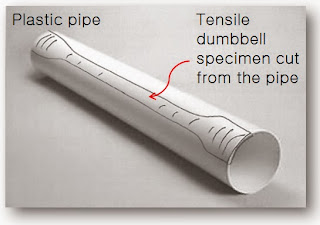Major incidents and disasters down the years have helped shape the modern world of materials and structural testing to recognised International Standards. One such example happened in Boston over 100 years ago……………….
There have been many accidents and disasters over the years that could, and should, have been averted by effective materials testing. Indeed, on more than one occasion, with any materials testing at all!
One such incident was the Great Molasses Flood, also known as the Boston Molasses Disaster, which occurred on January 15, 1919 in the North End neighborhood of Boston, Massachusetts.
 |
| The tank at 529 Commercial Street before the disaster |
A large storage tank filled with 2.3 million US galloons, weighing approximately 13,000 short tons, of molasses burst and the resultant wave of molasses rushed through the streets at an estimated 35 mph (56 km/h). The event entered local folklore and residents claimed for decades afterwards that the area still smelled of molasses on hot summer days.
The offending 50ft tall tank had a diameter of 90ft and was situated at the Purity Distilling Company at 529 Commercial Street. The molasses were being stored before being piped to a nearby plant to be fermented into ethanol for use in the production of alcoholic drinks and munitions.
On the fateful day, temperatures in Boston had risen to barely above 40°F (4°C), although this was after climbing rapidly following a few days of extremely cold weather. The day before a ship had delivered a fresh load of molasses, which had been warmed to reduce its viscosity for transfer due to the freezing conditions.
Possibly due to the thermal expansion of the older, colder molasses already inside the tank, the structure burst open and collapsed at approximately 12:30pm. Some witnesses reported they felt the ground shake and heard a roar as the tank collapsed, others reported a long rumble similar to the passing of an elevated train and, most importantly of all in this instance, a sound like a machine gun as rivets shot out of the tank.
The density of molasses is about 1.4 tonnes per cubic metre, 40% more dense than water, resulting in the molasses generating a great deal of potential energy. The collapse translated this energy into a wave of molasses 25 ft high at its peak, moving at 35 mph (56 km/h).
 |
Remains of the tank following the collapse
|
The wave was of sufficient force to drive steel panels of the burst tank against the girders of the adjacent Boston Elevated Railway's Atlantic Avenue structure and tip a streetcar off the tracks. Nearby buildings were swept off their foundations and crushed, with several blocks flooded to a depth of 2 to 3ft (60 to 90cm).
As the Boston Post reported: ‘Molasses, waist deep, covered the street and swirled and bubbled about the wreckage. Here and there struggled a form—whether it was animal or human being was impossible to tell. Only an upheaval, a thrashing about in the sticky mass, showed where any life was. Horses died like so many flies on sticky fly-paper. The more they struggled, the deeper in the mess they were ensnared.”
Men, women and children suffered likewise.
After the initial wave, the molasses became viscous, exacerbated by the cold temperatures, trapping those caught in the wave and making it even more difficult to rescue them.
 |
Damage to the Boston Elevated Railway
|
An estimated 150 people were injured and, after four days of searching, 21 people and several horses were found dead. Many of the dead were so glazed over in molasses that they were hard to recognize. Other victims were swept into Boston Harbor and were found three to four months after the disaster.
The official inquiry into the disaster highlighted the many engineering and safety deficiencies that led to the fatal failure of the tank. Poor construction and insufficient testing left the structure susceptible to increased internal pressure from carbon dioxide produced as the molasses fermented. This would have been exacerbated by the increase in weather temperature the previous day.
It was also found that the owners of the distillery, the United States Industrial Alcohol Company, had neglected basic safety tests while overseeing construction of the tank, such as filling it with water to check for leaks, as well as ignoring warning signs such as groaning noises each time the tank was filled. A lack of architectural or engineering experience by the employee responsible for its construction more than played its part!
The steel used in the tank’s aforementioned rivets was found to be flawed, resulting in structural failure under the increased pressure, and where they held cracks formed at the rivet holes. A 2014 investigation applied modern engineering analysis to the tanks structural condition. It found that the steel was half as thick as it should have been for a tank of its size, also lacking manganese, making the material more brittle as a result.
An in-depth investigation by The Daily Kos was particularly damning:
“The company had selected the site purely on its proximity to the wharfs without regard to the dense population in the area. It had placed a man in charge with no engineering or construction experience who neglected to take basic measures to insure a proper factor of safety was provided in the design and construction of the tank, neither retaining nor consulting qualified engineering professionals to create or review plans, failing to carry out proper inspections, failing to test the receptacle when completed, and ignoring (and even concealing) concerns about the tank's safety after it was filled.
In short, the lax construction standards at the time, inclusive of materials testing, had created a perfect storm of human error and engineering failure.
As a result of the accident, many laws and regulations governing construction were changed, including requirements for oversight by a licensed architect and civil engineer as well as the introduction of more stringent Standards for the materials used.








Comments